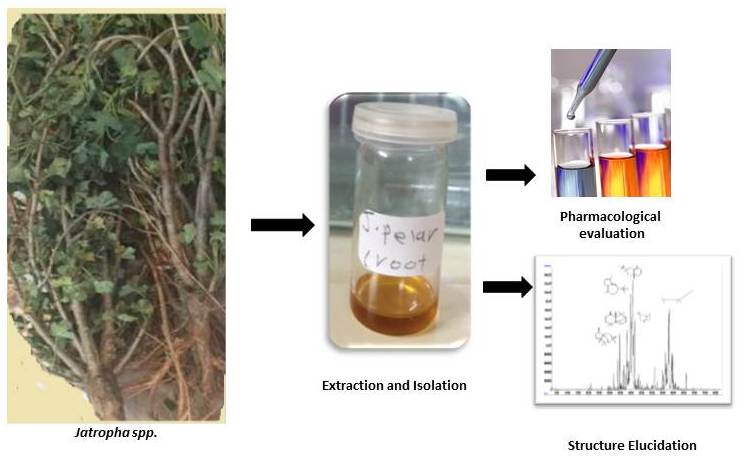Extensive phytochemical and chromatographic analysis of different root fractions of Jatropha pelargoniifolia Courb. (Euphorbiaceae) resulted in the isolation and identification of 22 distinct secondary metabolite compounds. Two new compounds, 6-hydroxy-8-methoxycoumarin-7-O-β-D-glycopyranoside and (3-(2-(methylamino) ethyl)-1H-indol-2-yl) methanol, were isolated and identified for the first time from a natural source. In addition, other known compounds, such as hovetricoside C and N-methyltryptamine were isolated from Euphorbiaceae, and hordenine, N-methyltyramine, their salts, cynaroside and linarin were identified in Jatropha spp. for the first time. Some isolated metabolites, such as β-sitosterol, β-sitosterol glucoside, curcusons D and C, naringenin, apigenin, cleomiscosins B and A, spruceanol, propacin, jatrophadiketone, and uracil were previously identified in various Jatropha species. The structures of the isolated compounds were determined using different spectroscopic techniques. The anti-inflammatory, antinociceptive, antipyretic, and antioxidant activities were evaluated for some adequately available isolated compounds. Compounds showed significant antinociceptive activity compared with the standard analgesic drug indomethacin. The edema size was significantly reduced (p< 0.05–0.001) in the animals treated with low doses (5 and 10 mg/kg) of the isolated compounds compared with those treated with a high dose (100 mg/kg) of standard anti-inflammatory drug (phenylbutazone). Furthermore, all tested compounds showed a significant (p< 0.05–0.001) reduction in the rectal temperature of hyper-thermic mice.

